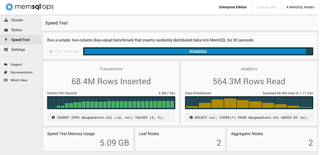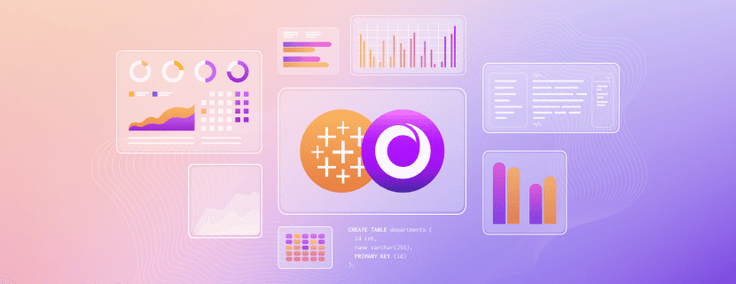
Together, Tableau and SingleStoreDB provide a powerful solution for businesses looking to gain instant insights from their data.
SingleStore's high-performance relational database makes it possible to perform real-time analytics, while Tableau's data visualization capabilities make it easy to understand and act on the insights generated by the data. The two products are easily integrated, allowing businesses to quickly start using the solution, and improve their performance and decision-making capabilities.
We’re pleased to announce that SingleStore has released our own JDBC connector on Tableau Exchange, driving low latency and high-fidelity data transfer between SingleStoreDB and Tableau.
Enterprises use business intelligence (BI) tools to gain insights into their data and make better-informed business decisions. BI tools allow businesses to analyze and visualize large amounts of data quickly and easily, enabling them to identify trends, patterns and insights that might otherwise be difficult to uncover.
The main reasons why enterprises use business intelligence tools like Tableau include data analysis, reporting and visualization, improved decision-making and increased efficiency. Overall, business intelligence tools are essential for enterprises that want to gain a competitive advantage by leveraging their data to make better-informed decisions.
Tableau
Tableau is a leader in enterprise BI software, helping people see and understand data. The visual analytics platform is transforming the way people use data to solve problems — organizations of all sizes trust Tableau to help them be more data driven. Customers like Verizon, Charles Schwab, Nissan and Chipotle trust Tableau to boost their bottom line with actionable insights. Tableau drives better business outcomes and intelligent customer experiences with insights everywhere, for everyone.
SingleStoreDB
SingleStoreDB is a multi-model, multi-cloud, scalable, distributed SQL database for both transactions and real-time analytics. Customers like Uber, Hulu, Armis and Comcast trust SingleStore to accelerate their time-to-insights while decreasing the size, complexity and cost of their data architecture.
SingleStoreDB unifies transactions and analytics in a single engine to drive low-latency access to large datasets, simplifying the development of fast, modern enterprise applications. Built for developers and architects, SingleStoreDB is based on a distributed SQL architecture, delivering millisecond performance on complex queries — all while ensuring your business can effortlessly scale.
There are a few main areas where SingleStore helps customers modernize, listed here. These areas enable use cases like operational analytics, AI/ML, IoT, fraud detection, customer 360, dashboard acceleration and many more:
- Eliminate database sprawl
- Accelerate real-time applications at scale
- Scale databases and power modern apps with cloud flexibility
- Deliver real-time analytics
Tableau + SingleStoreDB via new JDBC connector on Tableau Exchange
We’ll go through the steps for connecting SingleStoreDB to Tableau via the new JDBC connector on Tableau Exchange. Installation and configuration steps will depend on your Tableau and device specifications. For the extent of this example, we will be using:
- Tableau Desktop, Professional Edition: Version 2022.2.1 64-bit
- MacBook Pro w/ Apple M1 Pro chip: macOS Ventura 13.2.1
First, navigate to the SingleStoreDB JDBC connector page on Tableau Exchange. Click the “download” button on the page to download the Tableau connector file. Move the connector file (.taco) to the Tableau Connectors directory, which by default can be found at the following paths:
| Product/Platform | Path |
| Tableau Desktop (Windows) | C:\Users[user]\Documents\My Tableau Repository\Connectors |
| Tableau Prep (Windows) | C:\Users[user]\Documents\My Tableau Prep Repository\Connectors |
| Tableau Desktop (Mac) | /Users/[user]/Documents/My Tableau Repository/Connectors |
| Tableau Prep (Mac) | /Users/[user]/Documents/My Tableau Prep Repository/Connectors |
| Tableau Server | C:\ProgramData\Tableau\Tableau Server\data\tabsvc\vizqlserver\Connectors |
For our example, we’ll download the .taco file and put it in the following path:
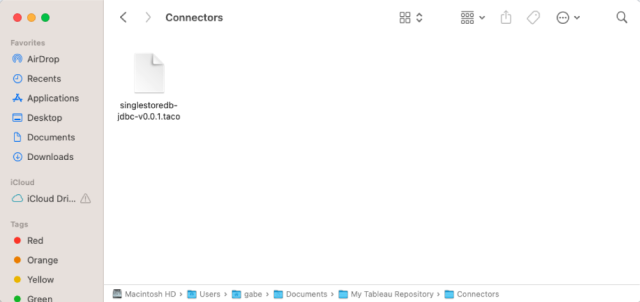
Next, navigate to SingleStore’s JDBC driver github page and find the latest version — as of May 2023, the latest version is 1.1.5. Download the file named singlestore-jdbc-client-<version>.jar. Move the driver (.jar) to the Tableau Drivers directory, which by default can be found at the following paths:
| Platform | Path |
| Windows | C:\Program Files\Tableau\Drivers |
| MacOS | ~/Library/Tableau/Drivers or ~/Library/JDBC |
| Linux | /opt/tableau/tableau_driver/jdbc |
For our example, we’ll download the .jar file and put it in the following path:
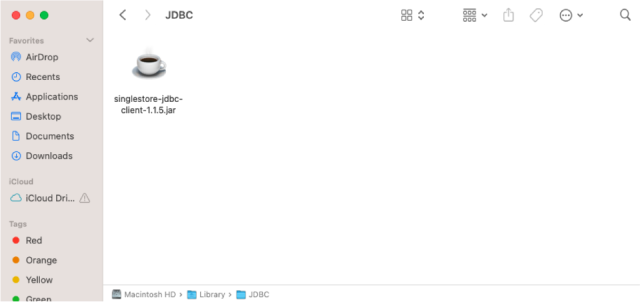
Now that we have the appropriate files downloaded in the proper paths, relaunch Tableau (for desktop products) or restart the server (for Tableau Server).
Under the “Connect” banner, within the “To a Server” section, select “More”. Within this list, you should see “SingleStoreDB JDBC by SingleStore”.
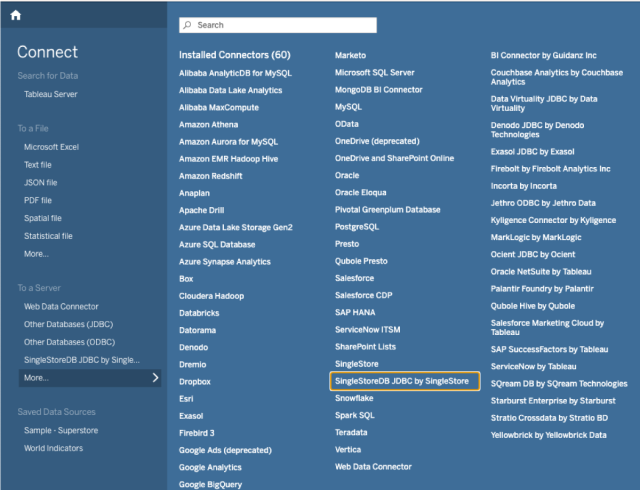
Click “SingleStoreDB JDBC by SingleStore” and enter the following details:
- Server: this will be something like svc-****.svc.singlestore.com for Singlestore Helios and likely an IP address for SingleStoreDB Self Managed
- Port: 3306 for Singlestore Helios and SingleStoreDB Self Managed
- Username: admin for Singlestore Helios and root for SingleStoreDB Self Managed
- Password: as configured by user
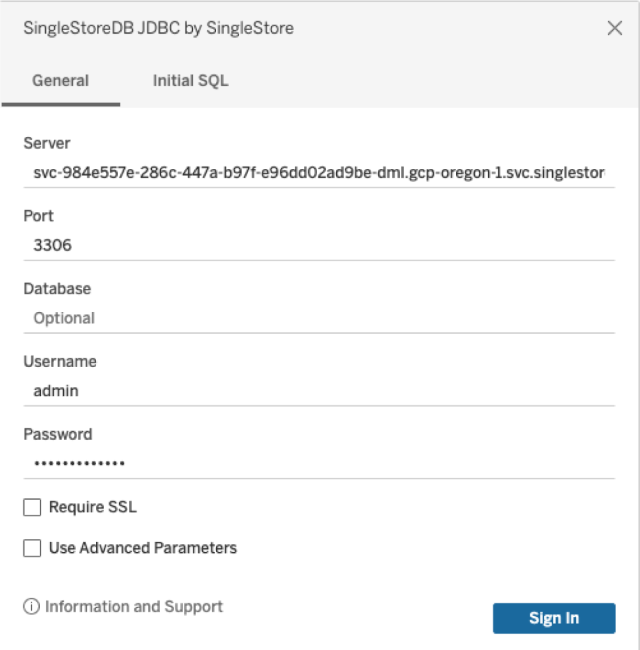
Click “Sign In”. If the connection was configured correctly, you should now be able to see SingleStoreDB data from within Tableau. You can now leverage Tableau to its full extent, gaining insights on the real-time data from SingleStoreDB.
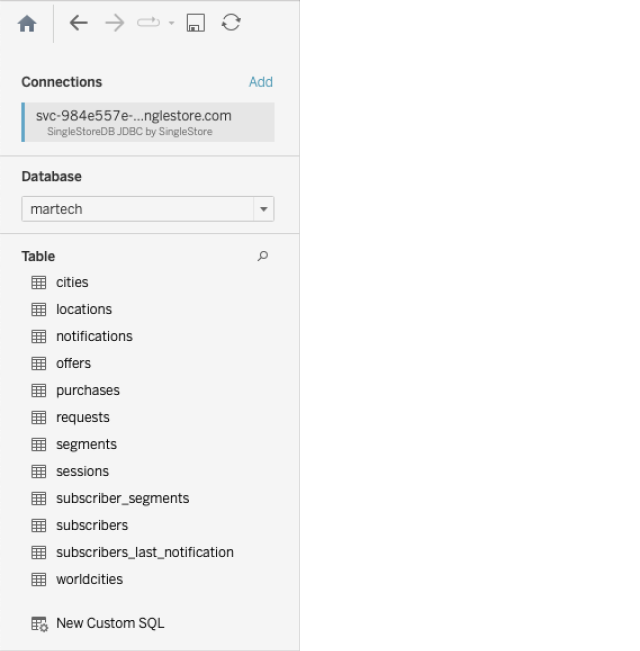
SingleStoreDB and Tableau have been partners for years, enabling enterprises to build real-time data platforms. Together, we decrease overall time-to-insights of business critical data, ensuring actionable insights are always available. SingleStore’s new JDBC connector on Tableau Exchange is designed to make it easier and faster for organizations to get up and running with Tableau + SingleStoreDB.
If you want to use Tableau and SingleStoreDB, follow this blog to establish the connection via JDBC. If you’re new to SingleStoreDB, try it for free today!





